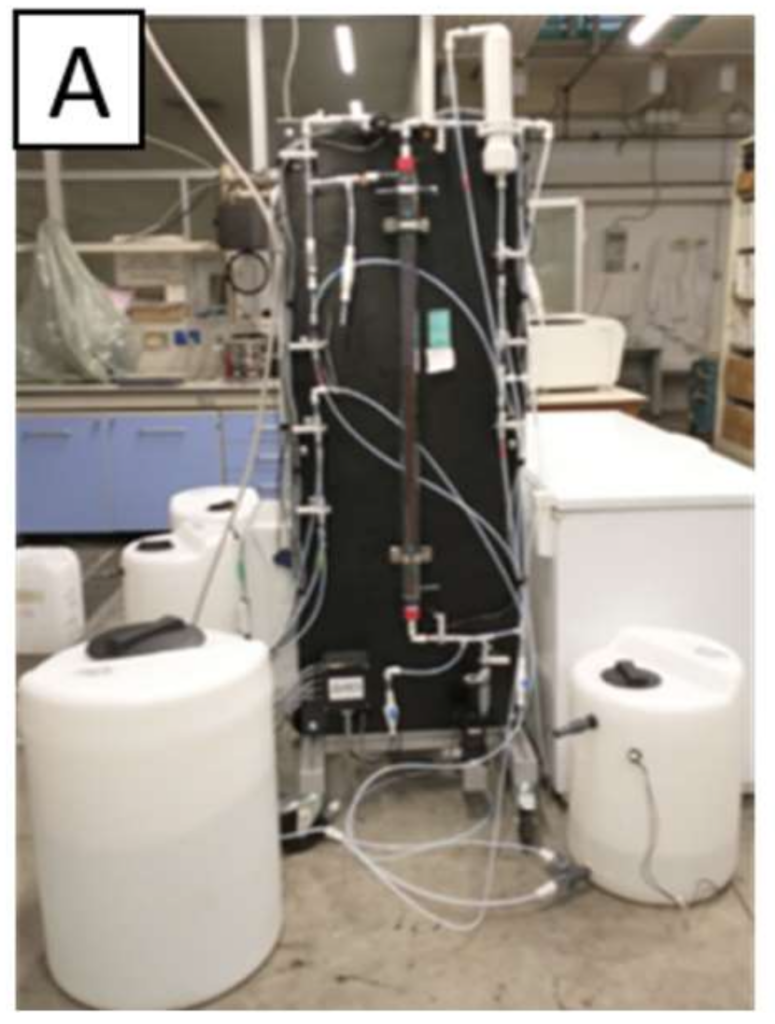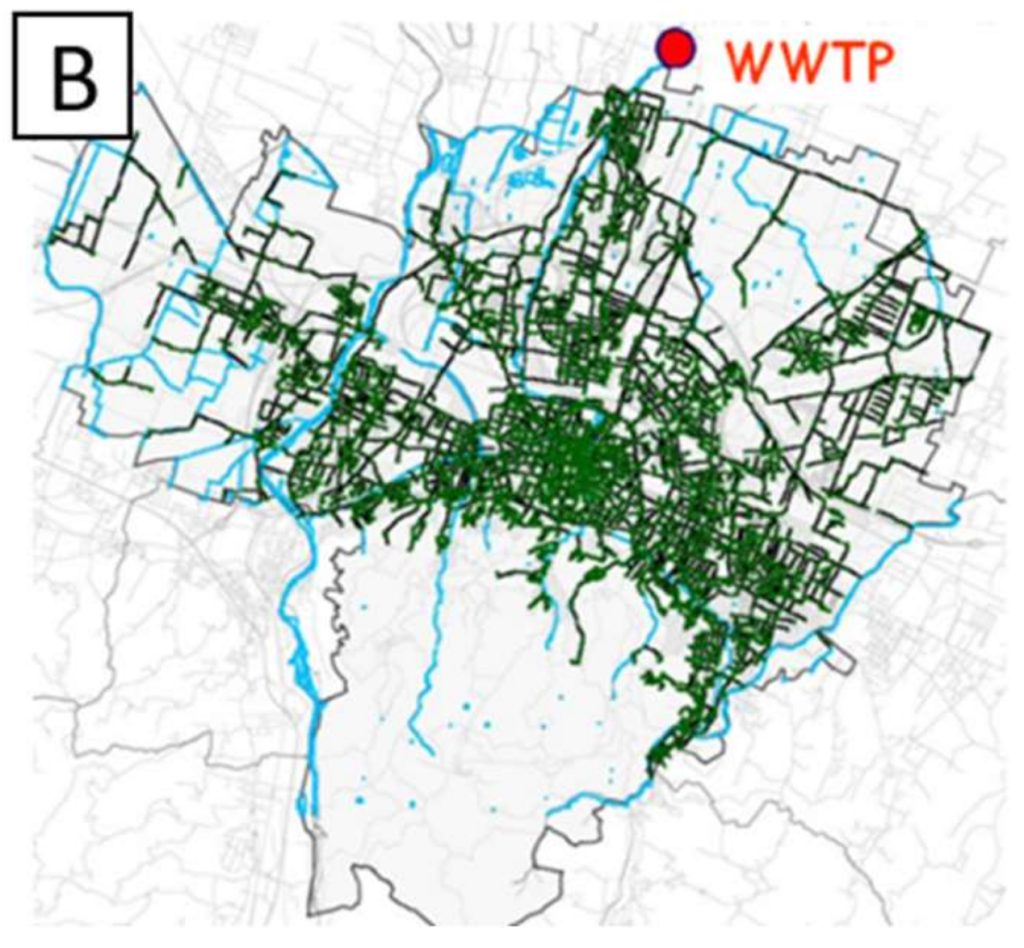CASE 2: Sewer of Bologna (Italy), and pilot plant installed at the Bologna WWTP CSO
Partner in charge: UNIBO (University of Bologna)

Location: Bologna, Italy
A pilot plant for the selective adsorption of N and P is shown (figure A), and the network of the Bologna sewer system (total length of about 800 km) is also shown (figure B). The Bologna case study includes: the modeling of the Bologna sewer system, which serves about 600,000 PE, including the effect of different climate change scenarios on the type and mass of pollutants discharged into the receiving surface water body from the CSO located at the entrance of the Bologna WWTP; and the implementation at the CSO of the Bologna WWTP of a TRL 5 technology for the removal of suspended solids, COD, N, P metals and selected PFAS, based on a combination of adsorption and microfiltration.
Current Status Case Study + Needs for Improvement:
The multi-utility operator HERA has developed a numerical model of the Bologna sewer system with the InfoWorks CS software. However, the current model does not include a full calibration for both quantity and quality aspects, nor a detailed evaluation of the pollutants discharged in surface water bodies by the sewer overflow; and it has never been used to predict the future system behaviour based on climate change scenarios. HERA currently implements daily monitoring in the conduit upstream of the Bologna WWTP, but it provides the daily average concentration of the primary pollutants. This approach is not useful to evaluate pollutant trends during rainfall events and the peak of pollutants due to the first foul flush effect. The CSO at the entrance of the Bologna WWTP currently discharges without any treatment into the Navile canal, a small river running next to the WWTP. This discharges significant amounts of BOD, suspended solids, macro-nutrients and micro-pollutants into the small surface water body.
Activities - Technical configurations and envisaged improvements
The model of the Bologna sewer system will be updated and converted and calibrated with both packages of In- foWorks ICM and SWMM. The CSO will be automatically sampled during rainfall events and analysed for traditional parameters as well as heavy metals, pharmaceuticals, PFAS and viruses. This monitoring activity will be integrated with the installation at the Bologna WWTP CSO of continuous-flow sensors for the real-time monitoring of electrical conductivity and suspended solids. The installation of two-level sensors will evaluate the flow rate in the sewer upstream and downstream of the CSO weir. In addition, the installation of three rain gauges in the city of Bologna will allow assessing rainfall and the runoff into the network. All these elements will be used to update and calibrate the upgraded model of the Bologna sewer system. Furthermore, a pilot plant for removing suspended solids, COD, N, P, metals and selected PFAS, based on a combination of adsorption and microfiltration, will be carried out in the UNIBO laboratories in the latter stages of the project.
Ambition until the Project End and Beyond
The upgraded network model will be used to assess the CSO behaviour and the amount of pollutants currently discharged in the Navile canal during different rainfall events. The integration of the model with (i) the outcomes of different CC scenarios (RCP4.5; RCP8.5) and (ii) the results obtained in the TRL 5 pilot plant, will allow quantification of the pollutants and modelling of the pathways within the sewer system. Prediction of the future discharge of pollutants will be made for the planned introduction of the TRL 5 pilot plant that will be installed at the CSO. Monte Carlo simulations will allow uncertainty analysis and climate change impacts to be assessed for the metrics of interest. The model outputs will be used as input elements for the DSS developed in WP4 and for developing a simplified Digital Twin model capable of obtaining information of the CSO's behaviour in real-time. This model will also allow efficient simulation of long rainfall series.

